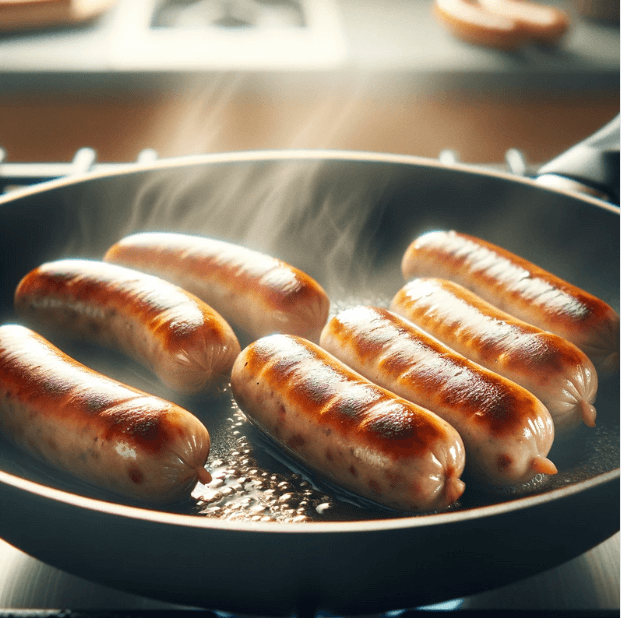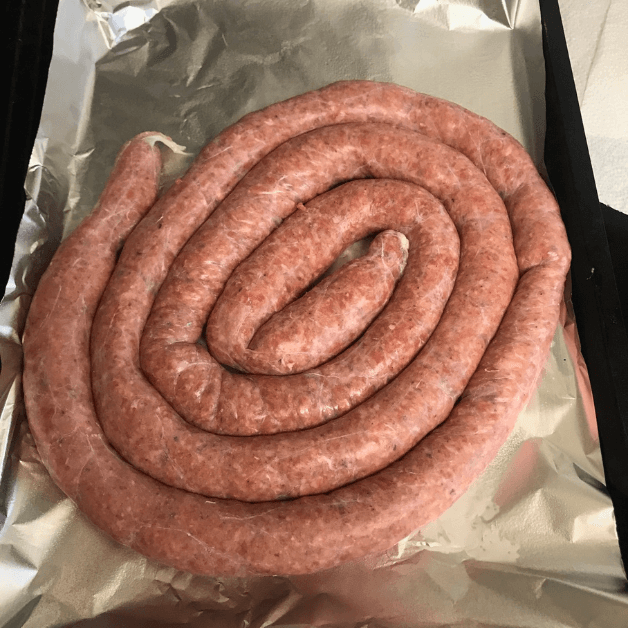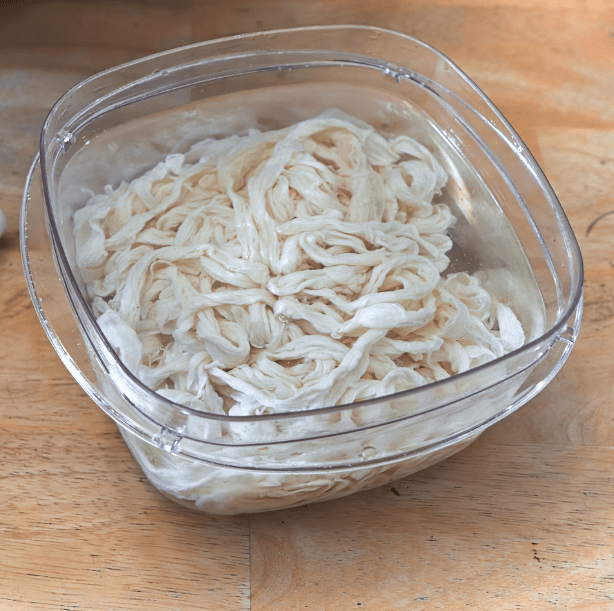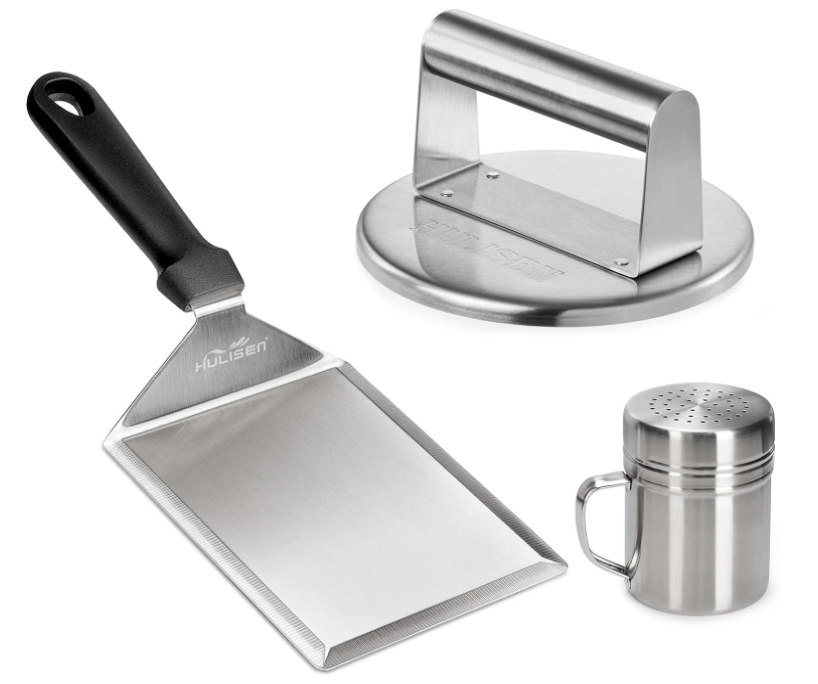Understanding Rusk in Sausage Making: A Comprehensive Guide
Rusk is a cornerstone ingredient in traditional sausage making, revered for its unique properties and role in crafting the perfect sausage. Originating from the British culinary tradition, rusk is essentially a dried cereal product, typically made from wheat flour, salt, and a raising agent. Its inclusion in sausage recipes isn’t just a matter of tradition; it’s a testament to its functionality.
When added to sausage meat, rusk performs a crucial role. It acts as a binding agent, seamlessly integrating with the meat and fats to create a unified texture. This binding quality prevents the fats from separating during cooking, ensuring each bite is uniformly juicy and flavourful. Moreover, rusk’s remarkable ability to absorb and retain moisture is pivotal in producing sausages that are succulent and tender.
By absorbing up to three times its weight in liquid, rusk contributes significantly to the overall mouthfeel of the sausage.
The versatility of rusk extends beyond its functional benefits. It serves as a blank canvas for culinary creativity, allowing sausage makers to infuse various flavours and seasonings into their products. This adaptability makes rusk an invaluable asset in the sausage-making process, offering endless possibilities for innovation and flavour profiling.
Rusk’s role in sausage making is multifaceted. It enhances texture, ensures moisture retention, and offers a platform for flavour innovation, making it an indispensable ingredient for any sausage maker aiming to craft high-quality products.
Rusk vs Breadcrumbs: What’s Best for Your Sausages?
The debate between using rusk or breadcrumbs in sausages is a long-standing one, each bringing its unique qualities to the table. While both are used as fillers and binders in sausage making, understanding their differences is key to choosing the right ingredient for your recipe.
Rusk, with its drier and coarser texture, excels in absorbing moisture. This characteristic is particularly beneficial in sausage making, as it allows the sausage to retain its juiciness and tenderness during cooking. Its ability to swell and absorb liquid also means that rusk can help in bulking up the sausage mixture, which is especially advantageous for commercial production where consistency and cost-effectiveness are priorities.
Breadcrumbs, on the other hand, are a more readily available option and can be made from various types of bread. They bring a slightly different texture to sausages, often resulting in a denser and less airy product compared to rusk. While they do absorb moisture, breadcrumbs tend to have a lower absorption rate compared to rusk.
In terms of flavour, breadcrumbs can impart a more pronounced taste, especially if made from seasoned or wholemeal bread. This can be an advantage for those looking to add an extra dimension of flavour to their sausages.
Ultimately, the choice between rusk and breadcrumbs depends on the desired texture, moisture content, and flavour profile of the sausage. Both ingredients have their merits, and experimenting with each can lead to delightful culinary discoveries.
The Role of Rusk in Enhancing Sausage Texture and Flavour
Rusk plays a pivotal role in the texture and flavour profile of sausages, contributing to their overall quality and appeal. Its influence on the texture of the sausage is particularly noteworthy. By absorbing moisture and fat, rusk helps in creating a consistent and cohesive mixture. This results in sausages that are not only juicy but also have a pleasant, uniform bite.
The absence of rusk or a similar binding agent could lead to sausages that are dense, dry, or crumbly – far from the ideal succulent texture that we all relish.
Flavor-wise, rusk is relatively neutral, allowing the natural flavours of the meat and seasonings to shine through. However, its absorbent nature means it can also act as a carrier for additional flavours. Spices, herbs, and other seasonings added to the sausage mix are more evenly distributed and retained within the sausage, thanks to rusk.
This ensures that each bite is packed with the intended flavours, making the sausage not just a treat for the palate but also an experience in itself.
Furthermore, the use of rusk in sausages can be a game-changer for those with dietary restrictions. Gluten-free and alternative rusks made from rice or cornflour offer the same textural benefits without the gluten, making it possible for more people to enjoy delicious, high-quality sausages.
In essence, rusk’s role in sausage making is integral. It enhances the texture, aids in flavour distribution, and can be adapted to suit various dietary needs, making it an indispensable ingredient for crafting premium sausages.
Types of Rusk: Pinhead, Medium, and Coarse Explained
Delving into the types of rusk, we find that this ingredient’s versatility extends to its various forms: pinhead, medium, and coarse. Each type serves a distinct purpose and brings a unique texture to sausages.
Pinhead rusk, with its fine texture, is particularly adept at absorbing moisture quickly. This rapid absorption is ideal for creating sausages with a smooth, even texture. Its fine grains distribute evenly throughout the sausage mix, ensuring consistency in every bite.
Medium rusk, as the name suggests, strikes a balance between pinhead and coarse rusk. It is preferred in recipes where a slightly coarser texture is desired, yet still maintains excellent moisture absorption. This type of rusk is a go-to for many traditional sausage recipes, offering a classic texture that is neither too fine nor too coarse.
Coarse rusk stands out for its larger grain size, making it suitable for sausages that require a more rustic, hearty texture. It’s often used in specialty sausages like haggis, where a more pronounced grainy texture is desirable. While it absorbs moisture more slowly than finer rusks, it provides a distinct bite that is sought after in certain sausage varieties.
Understanding these types of rusk allows sausage makers to tailor their recipes according to the desired texture and absorption properties, further showcasing rusk’s indispensable role in sausage making.
Making Sausages at Home: Using Rusk for Perfect Results
For home cooks venturing into sausage making, incorporating rusk can be the key to achieving professional-grade results. Using rusk in homemade sausages offers several benefits, from improved texture to enhanced flavour retention.
When incorporating rusk into your homemade sausages, start by considering the ratio of rusk to meat. A general guideline is to use about 10% rusk, but this can vary depending on your preference for moisture and texture. The rusk should be soaked in water or broth before mixing with the meat, allowing it to fully absorb the liquid and swell. This step is crucial as it impacts the final texture of your sausages.
Mixing the rusk with your choice of meats and seasonings is an exciting step where culinary creativity shines. Whether you’re aiming for traditional flavours or experimenting with new combinations, rusk serves as the perfect base to bind your ingredients together, ensuring even distribution of flavours and a consistent texture throughout.
The joy of making sausages at home is in the customization. With rusk, you have the flexibility to adjust the texture and flavour to suit your taste, making each batch of sausages uniquely yours. So, roll up your sleeves and let the aroma of cooking sausages fill your kitchen, knowing that rusk is your secret ingredient to sausage-making success.
Innovative Rusk Alternatives for Dietary Needs in Sausage Making
For those with specific dietary requirements, finding alternatives to traditional wheat-based rusk in sausage making is essential. Fortunately, there are several innovative substitutes that maintain the desired texture and flavour without compromising dietary needs.
Gluten-free options like rice rusk or cornflour-based rusk offer a similar texture and absorption properties as traditional rusk, making them excellent choices for gluten-sensitive individuals. These alternatives ensure that the sausages remain juicy and flavourful while adhering to dietary restrictions.
For those looking to experiment beyond conventional choices, ingredients like polenta, crushed cream crackers, or even couscous can serve as effective fillers. These alternatives not only provide the necessary binding and moisture-retaining qualities but also introduce new textures and flavours to your sausages.
Incorporating these alternative fillers into sausage recipes allows for a broader range of dietary preferences to be catered to, without sacrificing the quality and enjoyment of the final product. This adaptability in sausage making ensures that everyone, regardless of dietary restrictions, can enjoy a delicious, homemade sausage.
Exploring Rusk Varieties: English Rusk and Beyond
English rusk, a staple in British sausage-making, has a storied history and a distinct character that sets it apart. Traditionally made from wheat flour, salt, and a raising agent, English rusk is prized for its ability to absorb moisture and fat, lending sausages their characteristic juiciness and texture. But the world of rusk extends beyond these shores, encompassing a variety of types each with unique qualities.
Exploring different types of rusk can be a culinary adventure. From the finely ground pinhead rusk, ideal for a smoother sausage texture, to the coarser varieties that add a more rustic feel, each type brings something special to the table. In some regions, rusk may include different grains or seasonings, offering an opportunity to experiment with new flavours and textures in sausage recipes.
For the discerning sausage maker, understanding the nuances of various rusk types can elevate their craft. Whether sticking to the traditional English rusk or venturing into other varieties, the choice of rusk can significantly influence the final product, making it an area ripe for exploration and creativity.
The Historical Evolution of Rusk in British Sausage Recipes
Tracing the history of rusk in British sausage recipes unveils a rich culinary heritage. Rusk’s journey in sausage making dates back centuries, evolving alongside changing tastes and technologies. Originally, rusk was used as a practical solution to extend meat supplies and reduce waste, but it quickly became prized for its ability to improve sausage texture and flavour.
In the past, rusk was made from leftover bread, dried and ground into a coarse powder. This not only utilised food that would otherwise go to waste but also provided a filler that enhanced the texture of the sausage. Over time, as sausage making transitioned from a home-based activity to a more commercial endeavour, the production of rusk became more standardised, leading to the development of the specific types used today.
The evolution of rusk in sausage recipes reflects broader trends in food preservation, resourcefulness, and culinary innovation. Today, rusk remains a fundamental ingredient in many British sausage recipes, embodying a tradition of practicality and flavour enhancement that has stood the test of time.
Sausage Rusk Ingredients: Crafting the Perfect Blend
The art of making the perfect sausage rusk involves more than just combining wheat flour, salt, and a raising agent. It’s about understanding how these ingredients interact to create the ideal texture and flavour profile for your sausages. The quality of the wheat flour, the granularity of the salt, and the type of raising agent used can all vary, resulting in different types of rusk that can be fine-tuned to specific sausage recipes.
Crafting the perfect rusk blend requires a balance of science and art. The flour needs to be of a certain quality to ensure the rusk has the right level of absorbency. The salt not only flavours the rusk but also plays a role in texture. And the raising agent, often a form of baking powder, must be carefully measured to achieve the desired level of porosity in the rusk.
This intricate process of selecting and blending ingredients is what makes sausage making an artisan craft. Each choice in the composition of rusk contributes to the final quality of the sausage, making the selection of rusk ingredients a crucial step for any sausage maker aiming to produce superior products.
Rusk: The Heart of Quality Sausage Making
In conclusion, rusk stands as a pivotal ingredient in the realm of sausage making, distinguished by its ability to transform texture, enhance flavours, and cater to diverse dietary needs. Its unique properties of moisture absorption and fat retention are crucial in achieving the ideal sausage texture, ranging from smooth and uniform to rustic and hearty. The comparison between rusk and breadcrumbs offers valuable insights for culinary enthusiasts, highlighting the distinct advantages rusk brings to sausage recipes.
For those with specific dietary requirements, the exploration of rusk alternatives like gluten-free options and various fillers opens up a world of possibilities, ensuring that the joy of sausage making is accessible to all. The rich history of rusk in British culinary tradition further enriches its role, lending a cultural depth to its use in contemporary sausage recipes.
This guide underscores the importance of rusk in crafting high-quality sausages. Whether you’re a seasoned sausage maker or a curious home cook, understanding and utilising rusk effectively can elevate your sausage-making endeavours, leading to delicious and satisfying culinary creations.
Interested in exploring more culinary wonders or have your own insights to share? Reach out through our contact form – we’d love to hear your experiences and questions about sausage making!
FAQs: Sausage Making with Rusk
What is Rusk and Why is It Important in Sausage Making?
Rusk is a dried, crumbled bread product, often made from wheat flour, salt, and a raising agent. It’s a key ingredient in sausage making due to its ability to absorb moisture and fat, contributing to a juicier, better-textured sausage. Rusk helps to bind the ingredients together, ensuring a consistent and satisfying texture in every bite.
How Does Rusk Compare to Breadcrumbs in Sausage Recipes?
While both rusk and breadcrumbs act as fillers in sausages, rusk is preferred for its higher moisture absorption rate. This leads to a more succulent sausage, whereas breadcrumbs can result in a denser texture. The choice between the two often depends on the desired consistency and moisture level in the sausage.
Can I Use Gluten-Free Rusk for Sausage Making?
Absolutely! Gluten-free rusk is available and is a great alternative for those with dietary restrictions. It performs similarly to traditional wheat-based rusk, ensuring that the sausages retain moisture and have a desirable texture, without any gluten content.
What Are the Different Types of Rusk Used in Sausage Making?
In sausage making, rusk comes in three main types: pinhead, medium, and coarse. Pinhead rusk is finely ground, ideal for smoother sausages. Medium rusk offers a balance, suitable for most traditional recipes. Coarse rusk provides a rustic texture, perfect for specialty sausages like haggis.
How Much Rusk Should I Add to My Sausage Mixture?
A general guideline is to use about 10% rusk in relation to the weight of the meat in your sausage mixture. However, this can vary depending on the desired texture and moisture of the final product. Adjusting the rusk quantity allows for customization of the sausage’s consistency.
Are There Any Innovative Alternatives to Rusk in Sausage Making?
Yes, there are several innovative rusk alternatives for those looking to experiment or cater to specific dietary needs. Options include polenta, crushed cream crackers, rice, couscous, or bulgur wheat. These alternatives can provide different textures and flavours, adding a unique twist to your sausages.
What Role Does Rusk Play in the Flavour of a Sausage?
While rusk itself has a neutral flavour, it plays a significant role in enhancing the overall flavour of a sausage. It evenly distributes and retains the flavours from the meat and seasonings, ensuring a consistent taste throughout the sausage. Additionally, rusk’s absorbency allows it to take on the flavours it’s mixed with, subtly contributing to the sausage’s flavour profile.
Can Rusk Affect the Nutritional Value of Sausages?
Rusk’s primary role is textural, and it has a low nutritional value. However, it can impact the calorie and carbohydrate content of sausages. For a healthier option, consider using whole grain or gluten-free rusk alternatives.
Interesting Facts About Rusk in Sausage Making
Rusk’s Historical Roots in Sausage Making
Rusk has been a key ingredient in sausage making for centuries, particularly in British cuisine. Its historical use dates back to times when maximising food resources was crucial. Originally, rusk was made from stale bread, which was dried and crumbled. This not only reduced food waste but also provided a cost-effective way to extend meat supplies and enhance the texture of sausages. This practice evolved into the use of specially made rusk, which became a standard in commercial sausage production.
Rusk’s Versatility Across Global Cuisines
While rusk is prominently used in British sausages, its versatility has seen it being adopted in various forms across different cuisines. In some European countries, similar ingredients are used in sausage recipes, albeit with regional variations in grain type and preparation method. This adaptability of rusk highlights its universal appeal in sausage making, transcending cultural and culinary boundaries.
The Science Behind Rusk’s Moisture Absorption
The science behind rusk’s moisture absorption is fascinating. Rusk is capable of absorbing up to three times its weight in liquid, a property that is integral to its role in sausage making. This absorption is due to the porous nature of rusk, which is achieved through the baking process. When mixed into sausage meat, it evenly distributes moisture and fat throughout the sausage, ensuring that each bite is juicy and flavourful. This unique characteristic of rusk sets it apart from other fillers and makes it a preferred choice among sausage makers.










